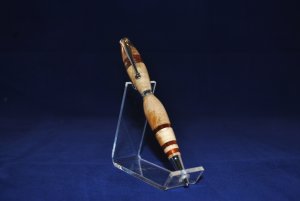Warren White
Member
I think my blank was still a bit warm when I tried to glue the brass tube in place. About 3/4 of the way in, I shifted my grip to add glue to the end and OOPS, the tube was stuck solid, part way in. No way to get it free without braking the blank, which I should have done.
I guess one swift movement is the answer, but I am wondering if I can find 3/8" brass tubing in lengths, how do you cut it to the exact length you need?
I don't mind spending $2.50 for additional tubing from Penn State, but $5.45 for shipping seems to be a bit too high.
Thanks,
Warren
I guess one swift movement is the answer, but I am wondering if I can find 3/8" brass tubing in lengths, how do you cut it to the exact length you need?
I don't mind spending $2.50 for additional tubing from Penn State, but $5.45 for shipping seems to be a bit too high.
Thanks,
Warren

